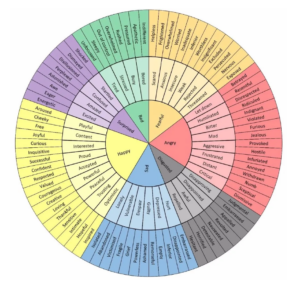
Overcoming The Emotional Rollercoaster In Sales

Sales is often compared to an emotional rollercoaster, with salespeople frequently facing difficult emotions that can impact mental performance throughout the day.
One minute you might be celebrating a closed deal, and the next, you’re feeling anxious or disappointed when a client suddenly stops responding. This constant shift between emotional highs and lows can be exciting at times, but more often, it’s draining and harmful to your well-being.
In the early days of my sales career, I often experienced this when leaving the office at 5 p.m., feeling a strange buzz—a tangled mix of happiness, frustration, anxiety, and sadness.
But instead of trying to understand these emotions, I found ways to escape them.
[restrict]I’d spend hours partying, drinking, or playing video games, avoiding the discomfort of facing how I truly felt. This worked for a while, but eventually, it all caught up with me, leading to panic attacks, difficult sleeping and an inability to sell effectively the next day.
The reality is, you can’t just ignore emotions—they don’t disappear.
The harder you try to push them away, the more they build up.
To stay mentally healthy and have a long career in sales, it’s crucial to improve emotional literacy—the ability to identify, understand, and express your feelings.
Tian Dayton defines emotional literacy as “the ability to put feelings into words so they can be understood.”
Unfortunately, many of us in sales can only name a few strong emotions like anger, anxiety, or happiness. But when a sales-related event triggers you, you may experience a mix of emotions, some intense, some more subtle. For example, after missing a target, you might feel loneliness or inferiority, and when a client ghosts you, you might feel skepticism creeping in.
To manage these emotions, it’s essential to recognize and name even the quieter feelings.
If we don’t, they’ll pile up, leaving us overwhelmed.
A helpful way to think about emotions is to see them as waves—we aren’t the wave itself but observers watching them pass. When emotions get tangled, it feels like you’re drowning. The first step to releasing these emotions is to identify and label them. By labeling each feeling—whether it’s anger, anxiety, or something more nuanced—we give ourselves the power to let them go.
Exercise: If you’re looking for practical ways to do this, using tools like an emotions wheel below can help you pinpoint what you’re feeling. Start by labeling and listing every emotion that is speaking to you within the wheel. Sit with each emotion, where do you feel them in your body and reflect on what they might be telling you.

Image by @trainingsbyromy on Instagram
Research by James Pennebaker shows that journaling about emotional experiences like this can significantly improve both mental and physical health. People who write about their feelings tend to feel less anxious, have better relationships, and even perform better at work.
You can also start to improve your emotional literacy through communication with others. In sales, leaders often ask, “How are you feeling this week?” But a more effective question is, “What emotions have you experienced this week, and what caused them?”
By working on emotional literacy together, sales reps and leaders can build stronger relationships, communicate better, and navigate the emotional rollercoaster with more confidence.
[/restrict]
































